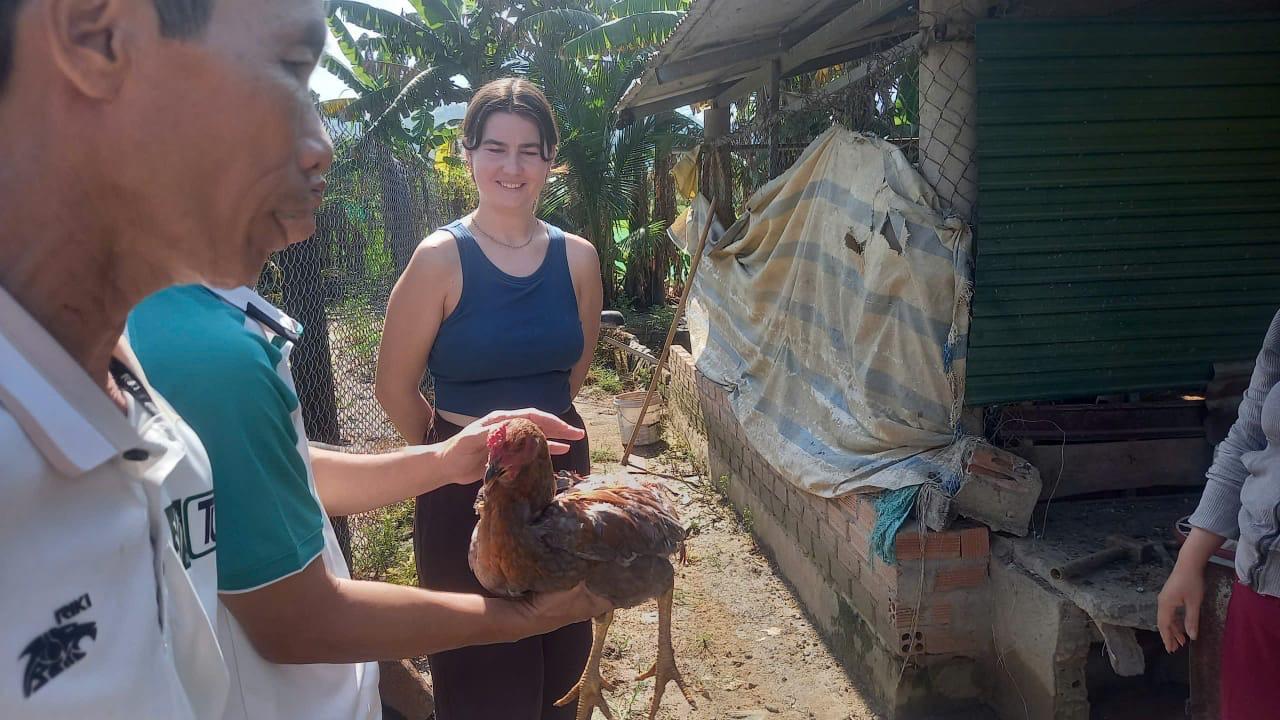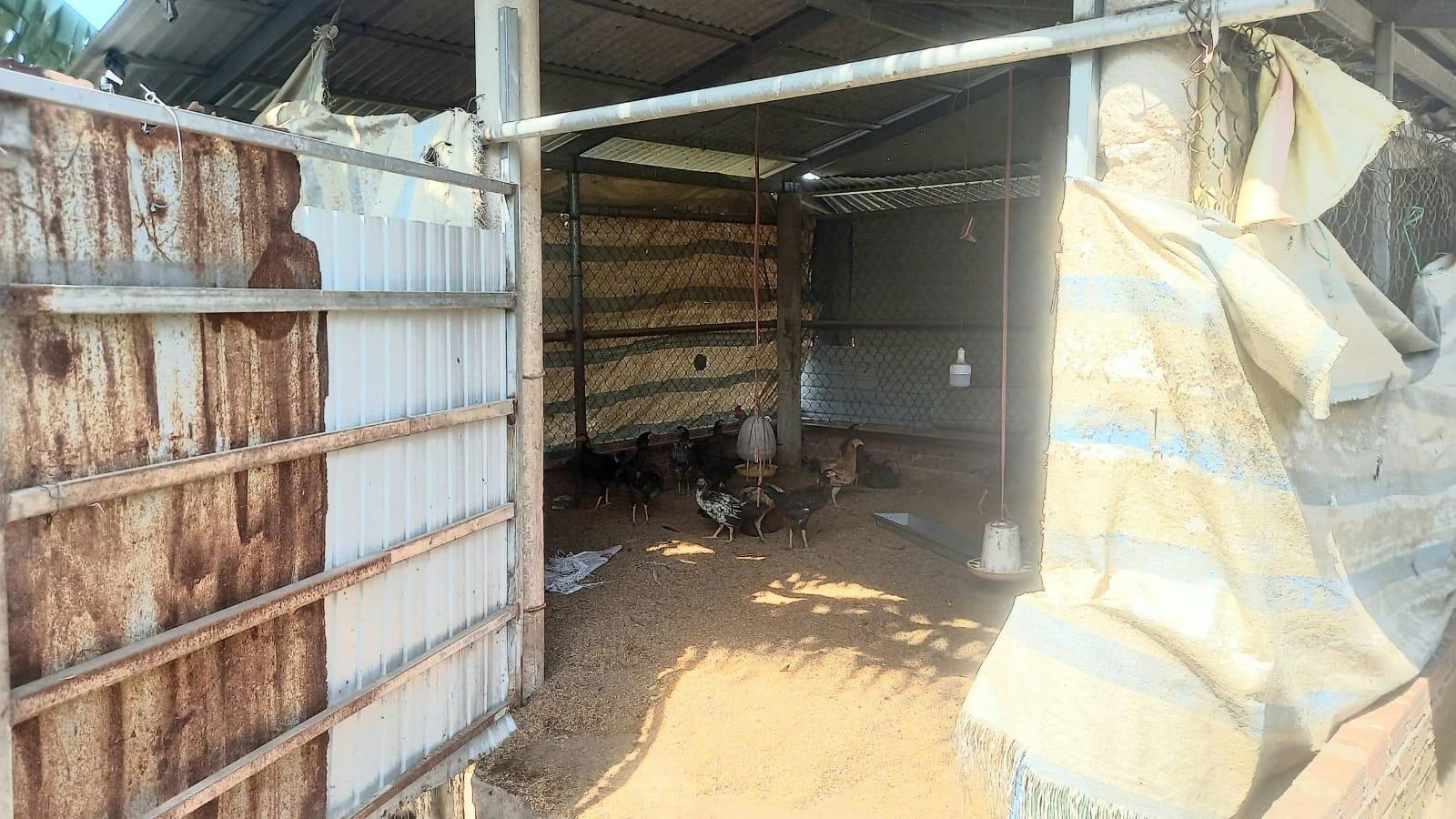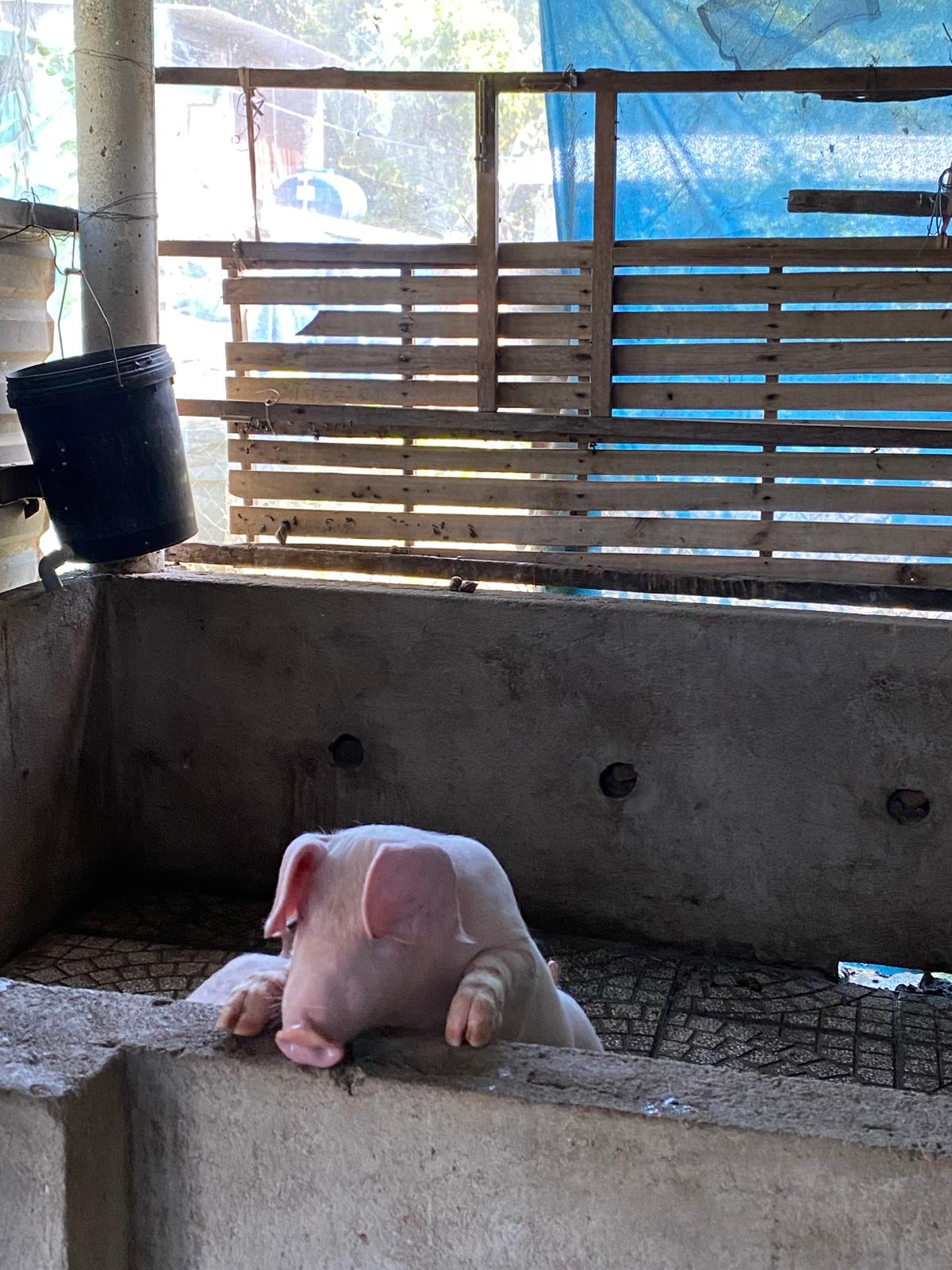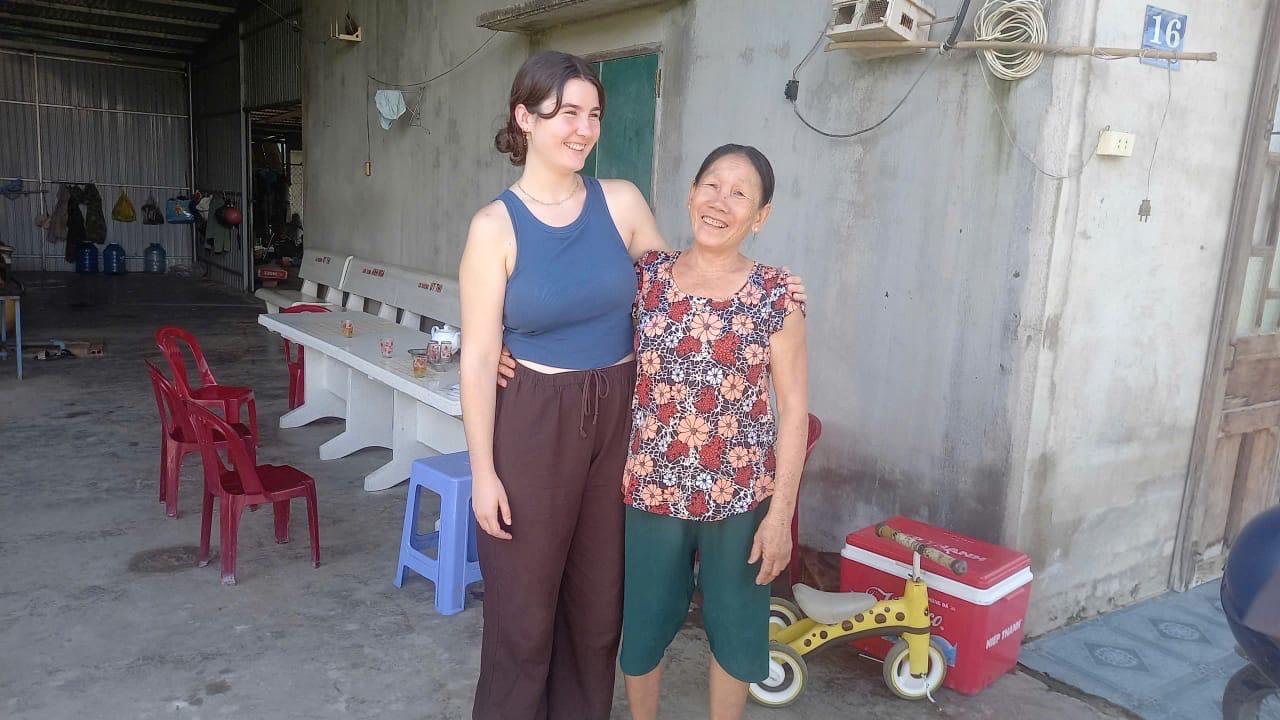First Family – The Biological Bedding Model
The first family is composed of five members: a grandmother, a mother, her daughter, and two grandsons. They own 200 m² of rice fields. The daughter has several health issues, including heart and kidney problems, and recently broke her collarbone in a motorbike accident. Even with 80% of her medical costs covered by health insurance, her treatment still costs around 3 million VND per month.
Thien Chi supports the family with a 5 million dong loan for fertilizers and to maintain their poultry. They also benefit from the biological bedding model, a technique used in chicken farming. This system involves covering the floor of the chicken coop with a 10 cm layer of rice husks mixed with probiotics. It reduces unpleasant odors, prevents bacteria, helps chickens grow faster, and saves both time and money since the coop doesn’t need daily cleaning with water. Once the chickens are sold, the used bedding can even be reused as fertilizer.
Thien Chi provides the probiotics, materials, vaccines, and health support whenever needed. The family bought 100 chickens with Thien Chi’s help three years ago, and they have been supported by the Center for seven years.
Sometimes, Thien Chi organizes visits for other farmers so they can see the model in action. Currently, the price of chicken is about 80,000 VND per kilo. Between 2018 and 2025, the family’s monthly profit nearly doubled, from 500,000 to 988,000 VND. The grandmother also receives 500,000 VND per month from the government as an elderly citizen.



Second Family – The Pig Bank Program
The second family includes a grandmother (her husband passed away), her daughter, and three grandchildren. They benefit from both the Pig Bank program and a 5 million dong microcredit loan for rice and poultry.
They own 100 m² of rice fields for personal consumption and earn their main income from chickens and pigs. Recently, they sold six piglets for 10 million VND and, after reinvesting, made a profit of 4 million. The family has been doing very well and continues to raise two pigs to produce new piglets.
Currently, the Pig Bank program has a success rate of around 80%, showing its strong positive impact on local families.

You can learn more about these 2 models and other on previous blogs posts about agricultural models. ( https://thienchicenter.org/article/agricultural-models-for-a-more-sustainable-future-21175.html and https://thienchicenter.org/article/more-sustainable-agricultural-models-supported-by-thien-chi-21182.html )
Leticia